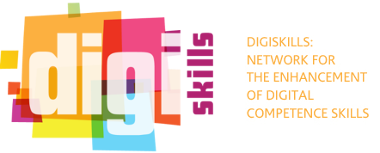7Cs of Learning Design and Toolkit

| Rate | |||
| Criteria Evaluation | |||
transferable adaptability innovative acceptability impact effectiveness availability creativity collaborative
The good teaching practice at a glance
Lesson plan methodology
Teacher
Adult Education
The 7Cs of learning design framework illustrates the key stages involved in the design process, from initial conceptualisation of a learning intervention through to trialing and evaluating it in a real learning context.
2014-04-07 16:30:00 - 2014-04-07 16:30:00
Detailed description
35 - 45
For Lecturers and tutors who want guidance and inspiration for more effective, imaginative and creative uses of a virtual learning environment such as Moodle or Blackboard, and the Web, to enhance the learning process for learners
2 days
The 7Cs of Learning Design workshop is a highly interactive, face-to-face two-day workshop that enables academics and course teams to design effectively for learning. This hands-on workshop is based on a well rehearsed, well researched team approach to learning design using learning technologies.
The framework consists of the following stages:
Vision
Conceptualise (i.e what are you designing and why, who are you designing for?)
Activities
Capture (in terms of capturing resources to be used and activities around Learner Generated Content)
Communicate (mechanisms to foster communication)
Collaborate (mechanisms to foster collaboration)
Consider (activities to promote reflection and enable assessment)
Synthesis
New technologies, offer a plethora of ways in which learners can curate and manage content, and communicate and collaborate with peers. Social and participatory media enable learners to be part of a rich ecology of peer learners, potentially distributed worldwide. Mobile learning is now a reality through smart phones and tablets, meaning that learners can truly learn anywhere and anytime. Virtual worlds and serious games provide rich authentic environments that can foster approaches to learning such as role-play and problem-based learning.
Despite this, there is a gap between the potential and the reality. Teachers and learners lack the necessary digital literacy skills (Jenkins 2009) to be able to harness the affordances (Conole and Dyke 2004) of new technologies. The chapter will describe a new learning design methodology, which has been created to help teachers make more informed design decisions that are pedagogically grounded and make effective use of technologies to foster different pedagogical approaches. This includes: a range of learning design representations, which both guide the design process and make the design explicit and hence sharable with others, harnessing social media to promote discussion and engagement with peers and in particular use of a specialised social networking site for sharing and discussing designs, and a range of workshops created and evaluated as part of our 7Cs of learning design framework (Armellini 2012; Conole 2012).
Combine (combining the activities to give a holistic overview of the design and associated learning pathways)
Implementation
Consolidate (in terms of running the design in a real learning context, evaluating, refining and sharing the design).
Each C has a set of Conceptual Learning Designs (CLDs) associated with it.
For each of the seven stages we have developed a series of conceptual designs, building on our own work and the work of others in the field. See the presentation here: http://www.slideshare.net/GrainneConole/course-features
The 7Cs of Learning Design Toolkit
This section contains an integrated set of resources for technology-enhanced learning design across discplines. The resources have all been tried and tested by participants on the University of Leicester's Carpe Diem workshops and the Open University's OULDI (OU Learning Design Initiative) project, and are organised under the headings of seven Cs: conceptualise, capture, create, communicate, collaborate, consider and consolidate.
E-tivities with complete guide is available: A brief guide to using the resources in this toolkit The 7Cs e-tivities map This document contains links to all the e-tivities in the 7Cs learning design toolkit.
| Country of origin | United Kingdom |
| Language of the practice | |
| Website related | http://www2.le.ac.uk/departments/education/people/ili-staff/grainne |
| Status of the practice | Final |
| Download full practice desciprion | |
- ICT enabled learning - Using digital resources for face-to-face classroom practice & for online learning/blended classroom practice
- Community Building - Using digital resources to connect learners/build communities
- Quality and Assessment - Using digital resources to better assess learning
About the author
| Name of contributor | Prof Grainne Conole |
| Affiliation of contributor | Professor of Learning Innovation, Director |
| Institution where this practice was implemented | Institute of Learning Innovation, University of Leicester, UK |
| Contact e-mail | suba@eden-online.org |
- Log in to post comments


